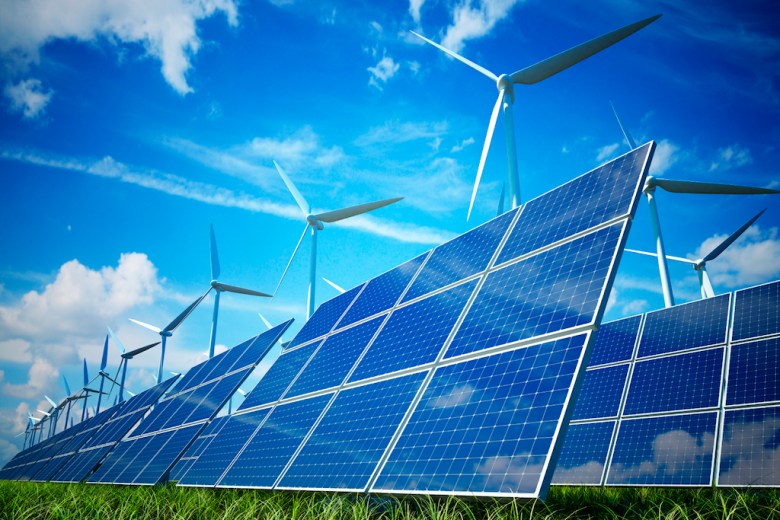
Australia is blessed – and cursed – with a federal system of government. It allows greater diversity, and also causes problems when it comes to the coordination of service delivery.
The biggest disparity is have always been in education and health. In the last few years energy and climate change policy have also become contentious.
The Federal Government’s recently announced National Electricity Guarantee, and its retreat from Renewable Energy Target (RET), means that the state targets are now much more important. The lack of a national policy makes it harder for the renewable energy industry, and almost guarantees that Australia will not meet the Paris climate change mitigation targets that it has signed up for.
The government has said there will be a special COAG on energy in November. It is hoping for something resembling a national policy, but its own lack of leadership means this will not be possible. Meanwhile the states, because of a genuine concern over climate change or political expediency, will continue to set their own RETs.
It seems likely that renewable energy and climate change policy will remain a politicised battleground in Australia for the foreseeable future. So it is perhaps timely to examine the policies of each of the states.
In August the Climate Council released a report ‘Renewables Ready: States Leading the Charge’. It is available here, and is worth a read.
But in just a few months things have changed. Such is the volatility and lack of certainty in what passes for energy policy debate in Australia that even that report is now out of date. So, how the states currently doing, and what policies will be that they be taking into the energy COAG next month?
New South Wales
NSW has a coalition government, but one which is not quite as noncommittal about climate and energy as its federal counterpart. It talks the talk on renewable energy, but it doesn’t walk the walk. It says it has a net zero emissions target of zero by 2050, which is what most of the other states say, but that is so far out as to be meaningless.
It has a ‘Renewable Energy Action Plan’ which “positions the state to increase energy from renewable sources at least cost to the energy customer and with maximum benefits to NSW.” In other words it is mostly fluff. Its only mention of an actual number is that it supports “the former national target of 20 percent” renewables by 2020. The Climate Council gives it a low C rating,
Victoria
Victoria’s Labor government has set a renewables target of 20 percent by 2020 and 40 percent by 2025. This year it introduced a ‘Renewable Energy (Jobs and Investment) Bill’ which will enshrine the state’s RET in legislation.
The legislation, known as the VRET, has passed the lower house, but the conservative opposition has vowed to destroy it. The upper house, the Victorian Legislative Council, has a very large and diverse crossbench, similar to the Australian Senate. The Climate Council gives Victoria a B rating.
Queensland
Queensland’s Labor government holds power on a knife edge and is facing an election, after which the reactionary One Nation party, which is strongest in that state, may hold the balance of power. The government has a target of 50 percent renewables by 2030, which again is so far away is not to mean very much.
The Government supports the giant Adani Coal mine, which dominates environmental debate in that state. Expect nothing to happen before the state election, due by May next year. The Climate Council gives Queensland a B rating.
South Australia
South Australia is the poster boy among the states for its renewable energy efforts. It is famously championed wind and solar energy. It has a target of 50 percent by 2025, and is already nearly there.
Its recent deal with entrepreneur Elon Musk for the world’s largest battery storage facility has given the state a global prominence in renewables. It well publicised blackouts during storms last year have polarised the debate, with opponents blaming the problems when the state’s energy policy. The government has reiterated its commitment to renewables since the announcement of the Federal Government’s National Electricity Guarantee.
The Climate Council gives South Australia an A rating.
Western Australia
Western Australia is the only state that is not part of the National Electricity Market (too expensive to get power lines across the Nullarbor), and it has a comparatively new Labour government which has said it will not introduce an RET. The Climate Council gives WA a C rating.
Tasmania
Tasmania is fortunate in having abundant hydroelectricity power, providing 90 percent of the state’s electricity. It is aiming for 100 percent by 2022. It does not figure strongly in the National RET debate, and has been given an A rating by the Climate Council.
ACT
The ACT’s RET of 100 percent by 2022 earns it an A rating from the Climate Council, but its small size makes it virtually irrelevant to the debate
Northern Territory
The NT has a meaningless renewable target of 50 percent by 2030, and like Western Australia and is not part of the national electricity market. Like the ACT and Tasmania, its policies carry no weight.
If it looks a bit like a dog’s breakfast, that’s because that is what it is. And the biggest dog of all, the Federal Government, has skipped the meal altogether.
Comment below to have your say on this story.
If you have a news story or tip-off, get in touch at editorial@governmentnews.com.au.
Sign up to the Government News newsletter
